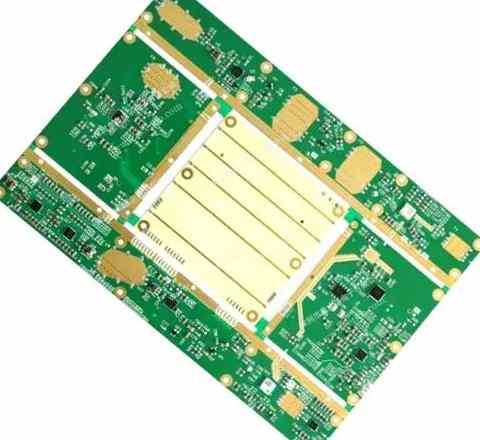Introduction to RO4003C
RO4003C is a thermoset ceramic-filled PTFE composite laminate material commonly used for high frequency circuit boards in radar, telecom, microwave and other RF/microwave applications. Some key properties that make RO4003C suitable for these applications are its low dielectric constant and loss tangent.
Dielectric Constant of RO4003C
The dielectric constant (Dk) of RO4003C laminates is 3.38 at 10 GHz. This relatively low dielectric constant allows for better impedance control and reduced signal loss in high frequency applications.
At lower frequencies, the Dk of RO4003C varies slightly:
- At 1 MHz: 3.38
- At 1 GHz: 3.35
- At 10 GHz: 3.28
As frequency increases, the Dk decreases gradually due to dipole relaxation effects. The consistency of Dk values over a wide frequency range is another reason RO4003C is well-suited for multi-band and wideband RF designs.
Factors Affecting Dielectric Constant

The dielectric constant of PTFE composites like RO4003C depends on:
- Filler material type and concentration – ceramic filler lowers Dk compared to pure PTFE
- Frequency – Dk decreases at higher frequencies due to dipole relaxation
- Temperature – Dk decreases slightly with increasing temperature
- Moisture absorption – water absorption increases Dk
RO4003C uses a proprietary filler formulation to optimize Dk while maintaining low loss for high frequency applications.
Dielectric Constant vs Temperature
| Temperature (°C) | Dk at 10 GHz |
|---|---|
| 25 | 3.28 |
| 50 | 3.24 |
| 100 | 3.15 |
Conclusion
The stable dielectric constant of 3.38 at 10 GHz makes RO4003C an ideal material for controlled impedance circuits operating at microwave frequencies. Its Dk consistency over frequency and temperature ranges allows flexible, wideband design.
Frequently Asked Questions
What is a typical dielectric constant value for RF materials?
Typical Dk values for common RF materials range from 2.2 for PTFE composites up to 10-12 for higher dielectric constant ceramics. RO4003C’s Dk of 3.38 provides a good balance of impedance control and lower loss.
How does moisture absorption affect Dk of RO4003C?
Moisture absorption can increase the Dk of RO4003C by up to 0.04 depending on humidity levels. This Dk change is relatively small but proper handling and drying can minimize moisture effects.
Does lamination pressure affect RO4003C’s dielectric constant?
Lamination pressure has minimal effect on the dielectric constant of cured RO4003C laminates. However, pressure can influence dielectric constant during the pressing of uncured dielectric sheets.
Can Dk be adjusted in RO4003C?
Yes, Dk can be tuned by changing the type and concentration of ceramic filler particles. RO4003C’s proprietary filler formulation is optimized for microwave applications.
Is the Dk of RO4003C isotropic?
RO4003C laminates exhibit isotropic Dk properties, meaning Dk does not vary with direction or material orientation. This makes circuit design easier compared to anisotropic materials.

Leave a Reply